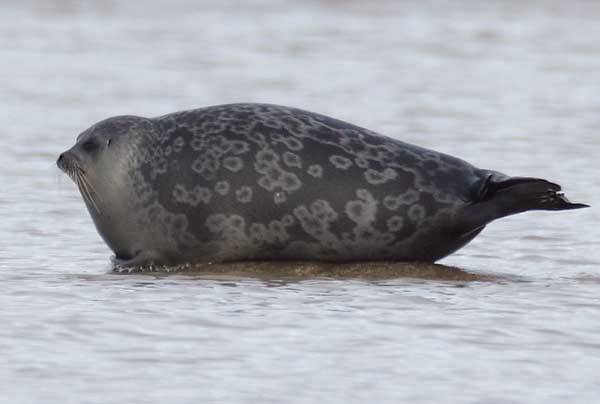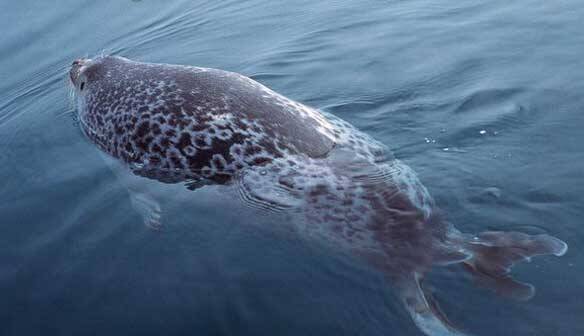Phoca hispida
IUCN
LCBasic Information
Scientific classification
- name:Phoca hispida
- Scientific Name:Phoca hispida,Ringed seal,Nordic seal, ice seal, ring seal
- Outline:Carnivora
- Family:Phocaea
Vital signs
- length:1-1.75m
- Weight:100-140kg
- lifetime:25-30years
Feature
The smallest seal in the Arctic
Distribution and Habitat
Distributed in the northern polar waters, lost individuals have been found in the Yellow Sea of China. The type locality of this species is Greenland.
Appearance
The smallest and most common seal of the Arctic, the ringed seal has a small head, a short cat-like snout, and a plump body. Its coat is dark with silver rings on its back and sides, and its silvery belly gives this seal its vernacular name. Depending on the subspecies and conditions, adults can range in size from 100 to 175 cm and weigh around 100-140 kg. The species is generally considered the smallest of the true seal family, although several related species, notably the Baikal seal, may approach a similar reduced size. Their small front flippers have claws more than 2.5 cm thick, which they use to maintain breathing holes through 2 m thick ice.
Details
The scientific name of the ringed seal is Phoca hispida, and its foreign name is Ringed seal. There are 5 subspecies. It is one of the smallest species in the seal family and the smallest seal in the Arctic.

Most seals in the world live in seawater, and the only species that lives entirely in freshwater is the Baikal seal. However, there are two subspecies of ringed seals that can live in freshwater lakes. Studies based on molecular evidence show that ringed seals and Baikal seals come from the same ancestor and have the closest relationship.
Ringed seals have more beautiful body markings than harbor seals. The markings on the body of ringed seals are composed of circles and dots, which look like small plum blossoms when viewed up close, while the patterns on the body of harbor seals are irregular dots.
Ringed seals eat a wide variety of small prey, including 72 species of fish and invertebrates. Foraging is usually a solitary behavior, and their prey of choice includes mysid shrimp, shrimp, Arctic cod, and herring. When foraging, ringed seals dive to depths of 11-46 meters. In the summer, ringed seals forage for Arctic cod along the edge of coastal ice. In shallow waters, they feed on smaller cod. Ringed seals may also eat herring, smelt, whitefish, yellow croaker, perch, and crustaceans.
Ringed seals live in Arctic waters, usually associated with floating ice and pack ice. Ringed seals maintain a breathing hole in the ice, allowing them to use ice habitats that other seals cannot use. They are in contact with the ice for most of the year and give birth on the ice in late winter and early spring.
Ringed seals are solitary animals with a lifespan of about 25 to 30 years. Female individuals reach sexual maturity at the age of 4, and males reach sexual maturity at the age of 7. Mating usually begins in late May each year. Three months after each pair of seals completes mating, the fertilized eggs begin to mature, and the female gives birth to a pup after a gestation period of 9 months. Male ringed seals do not raise their pups, becoming hands-off shopkeepers, relying entirely on female ringed seals for feeding.

Ringed seals have long been an important part of the diet of indigenous peoples in the Arctic. Early Paleo-Eskimo sites in the Canadian Arctic show that ringed seals hunted by indigenous peoples in the Arctic can be traced back to 3,500-4,000 years ago. Due to indiscriminate hunting, seawater pollution and climate warming, the seal population has dropped sharply. In order to call on people to protect rare animals such as seals, the Save the Seals Foundation designated May 1st of each year as International Seal Day in 1983.
The estimated population of Alaska ringed seals is 249,000. In 2010, the population trend of this population was unknown. Ringed seals are listed as "least concern" by the World Conservation Union and were considered "not threatened" under the Endangered Species Act in 2006. There were no reliable estimates of minimum populations, potential biological removal, and human-caused deaths in 2006. The annual level of death or injury related to commercial fisheries in the United States is considered insignificant. The Alaska ringed seal population is not considered a strategic fishery population. In 2008, the National Marine Fisheries Service began a conservation status review under the Endangered Species Act (ESA) to determine whether it is necessary to list this seal in the ESA.
Protect wild animals and stop eating game.
Maintaining ecological balance is everyone's responsibility!








